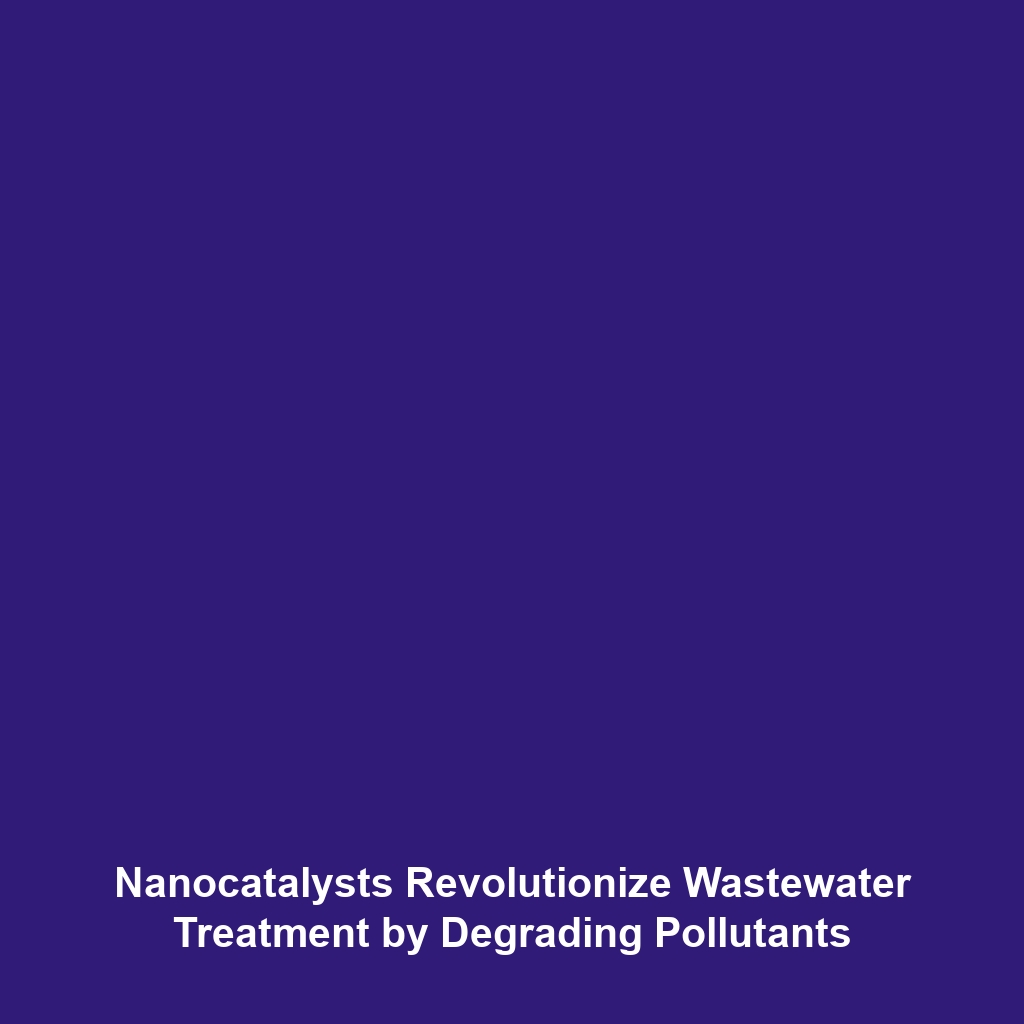Nanocatalysts Assist in Breaking Down Organic Pollutants in Wastewater
Introduction
In the realm of advanced nanomaterials, nanocatalysts are emerging as pivotal players in the effort to mitigate environmental pollution, particularly in wastewater treatment. These nanoscale materials enhance chemical reactions, thereby offering efficient solutions for breaking down harmful organic pollutants. As urbanization and industrial activities intensify water contamination, understanding the role of nanocatalysts becomes crucial. Their unique properties make them highly effective in purifying water, leading to sustainable practices that benefit both human health and the environment.
Key Concepts
Understanding Nanocatalysts
Nanocatalysts are materials that provide an increased surface area and enhanced reactivity due to their nanoscale dimensions. In breaking down organic pollutants in wastewater, these substances facilitate complex chemical reactions that degrade harmful compounds effectively. The principles governing their functionality include:
- Surface Area: Increased surface area allows for greater interaction with pollutants.
- Reactivity: Tailored chemical properties enhance catalytic activity.
- Stability: Enhanced performance and longevity in wastewater environments.
Applications and Real-World Uses
The applications of nanocatalysts in breaking down organic pollutants in wastewater are numerous and impactful. Examples include:
- Industrial Wastewater Treatment: Nanocatalysts are utilized to treat wastewater from manufacturing processes, effectively reducing toxic organic compounds.
- Municipal Wastewater Facilities: Implementation in sewage treatment plants to minimize pollutant load before discharge.
- Remediation Technologies: Use in advanced oxidation processes (AOPs) to degrade pollutants that traditional methods cannot handle.
Current Challenges
Despite the promise nanocatalysts hold, several challenges remain in their application for breaking down organic pollutants in wastewater:
- Cost-Effectiveness: High production costs of some nanocatalysts limit wide-scale adoption.
- Environmental Concerns: Potential toxicity and environmental impact of nanomaterials raise concerns.
- Standardization: Lack of standardized methods for evaluating nanocatalyst efficacy poses challenges for regulatory processes.
Future Research and Innovations
Future advancements in the field of nanocatalysts promise to enhance their effectiveness and applicability in wastewater treatment. Upcoming innovations include:
- Smart Nanocatalysts: Development of responsive catalysts that can adapt to varying pollutant concentrations.
- Hybrid Nanomaterials: Combining different nanomaterials to create multifunctional catalysts for broader applications.
- 3D-Printed Nanocatalysts: Innovative fabrication techniques that can enhance the efficiency of nanocatalysts in situ.
Conclusion
Nanocatalysts play a transformative role in breaking down organic pollutants in wastewater, presenting significant applications within the field of advanced nanomaterials. As we advance our understanding and address the challenges facing these materials, we pave the way for cleaner water resource management and sustainable industrial practices. To learn more about the impact of advanced nanomaterials on environmental sustainability, explore our related articles here and here.
